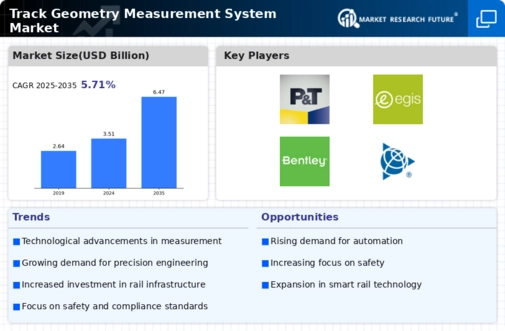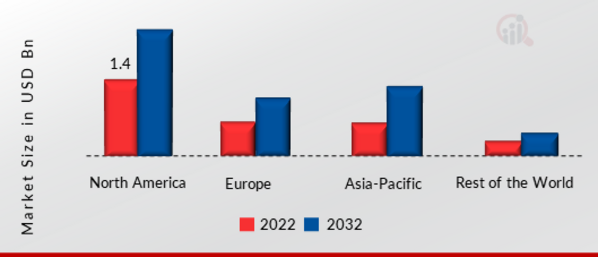Market Share
Track Geometry Measurement System Market Share Analysis
In the dynamic landscape of the Track Geometry Measurement System (TGMS) market, companies employ various strategies to position themselves effectively and secure a favorable market share. One primary strategy is technological differentiation. Companies strive to distinguish their TGMS offerings by integrating advanced technologies such as high-precision sensors, data analytics, and artificial intelligence. A technologically superior system not only attracts more customers but also enhances the overall performance and reliability of track inspection, thereby solidifying the company's market position.
Another critical factor in market share positioning is strategic partnerships and collaborations. TGMS manufacturers often forge alliances with railway operators, maintenance service providers, or technology companies to create comprehensive solutions. These partnerships help in addressing specific needs of the industry, facilitating the development of integrated systems that cater to the diverse requirements of different rail networks. By aligning with key stakeholders, companies can strengthen their market position and gain a competitive edge.
Cost-effectiveness is a pivotal aspect of market share positioning in the TGMS market. Companies endeavor to offer solutions that provide optimal performance at a reasonable cost. This approach becomes especially crucial for attracting budget-conscious customers, particularly in regions where economic considerations heavily influence purchasing decisions. Striking the right balance between affordability and functionality is a key strategy for companies aiming to capture a significant market share.
Global market expansion is another strategy employed by TGMS manufacturers. As railway networks continue to expand worldwide, companies seek to establish a presence in emerging markets with growing infrastructural needs. This involves understanding and adapting to the specific requirements and regulatory environments of different regions. By strategically entering new markets, companies can tap into fresh opportunities, broaden their customer base, and enhance their overall market share.
Customer-centric approaches also play a vital role in market share positioning. Understanding the unique needs and challenges of railway operators allows companies to tailor their TGMS solutions accordingly. Providing excellent customer support, training programs, and customization options fosters long-term relationships with clients, contributing to a positive brand image and customer loyalty. Satisfied customers are more likely to recommend and continue using a company's products, thereby solidifying the company's market share.
Continuous innovation is an ongoing strategy to stay competitive in the TGMS market. With the rapid evolution of technology, companies need to stay ahead of the curve by regularly updating and improving their offerings. This not only ensures that their products remain relevant in the market but also demonstrates a commitment to staying at the forefront of technological advancements. Innovation attracts attention, and companies that consistently introduce new and improved features can position themselves as industry leaders, thereby influencing market share positively.
Market share positioning also involves a keen awareness of regulatory frameworks. Compliance with industry standards and government regulations is non-negotiable in the rail sector. Companies that proactively align their TGMS solutions with these standards gain a competitive advantage by ensuring that their products meet the required safety and quality benchmarks. Regulatory compliance enhances credibility and trust in the market, which, in turn, contributes to a stronger market position.







Leave a Comment